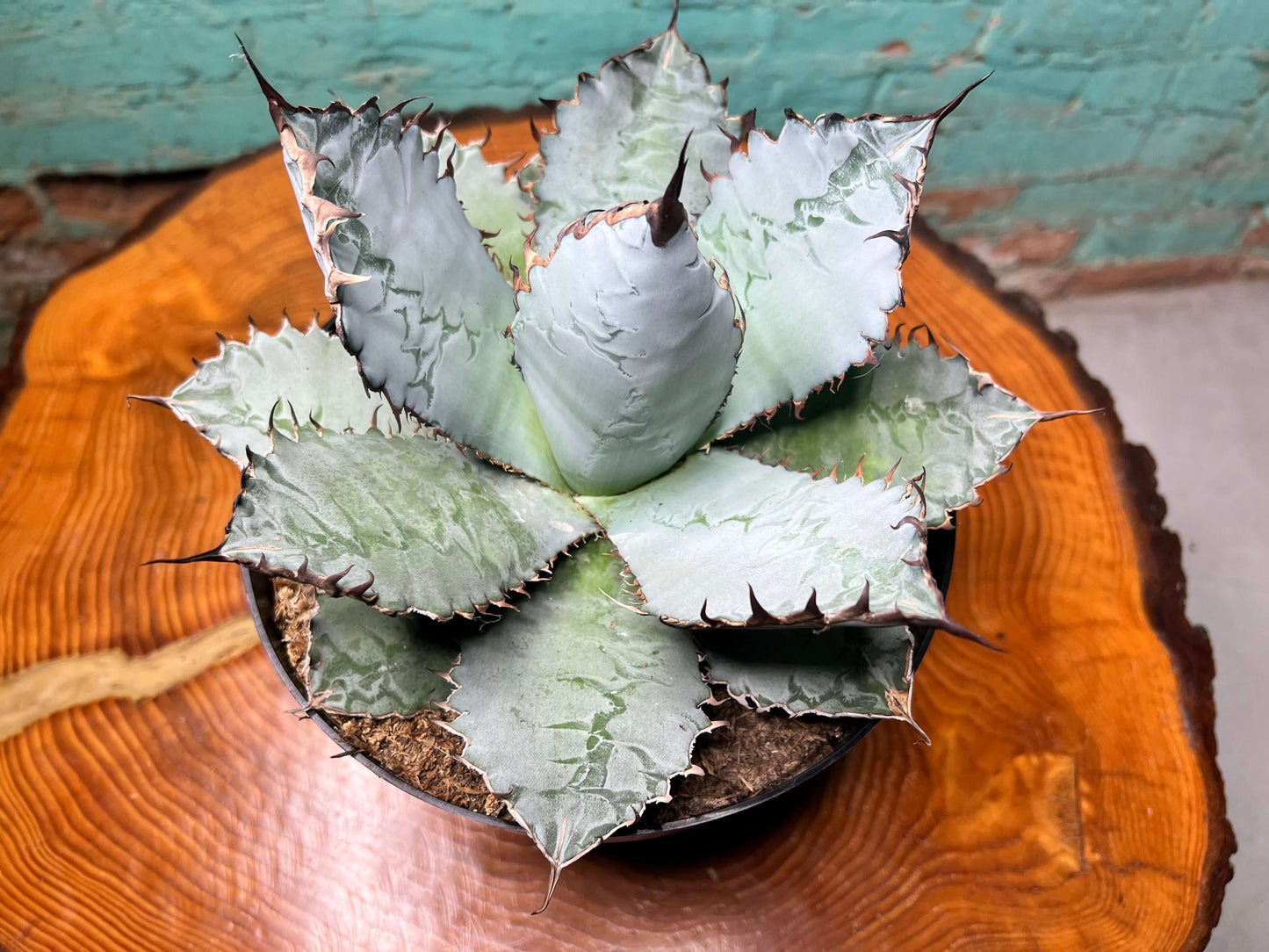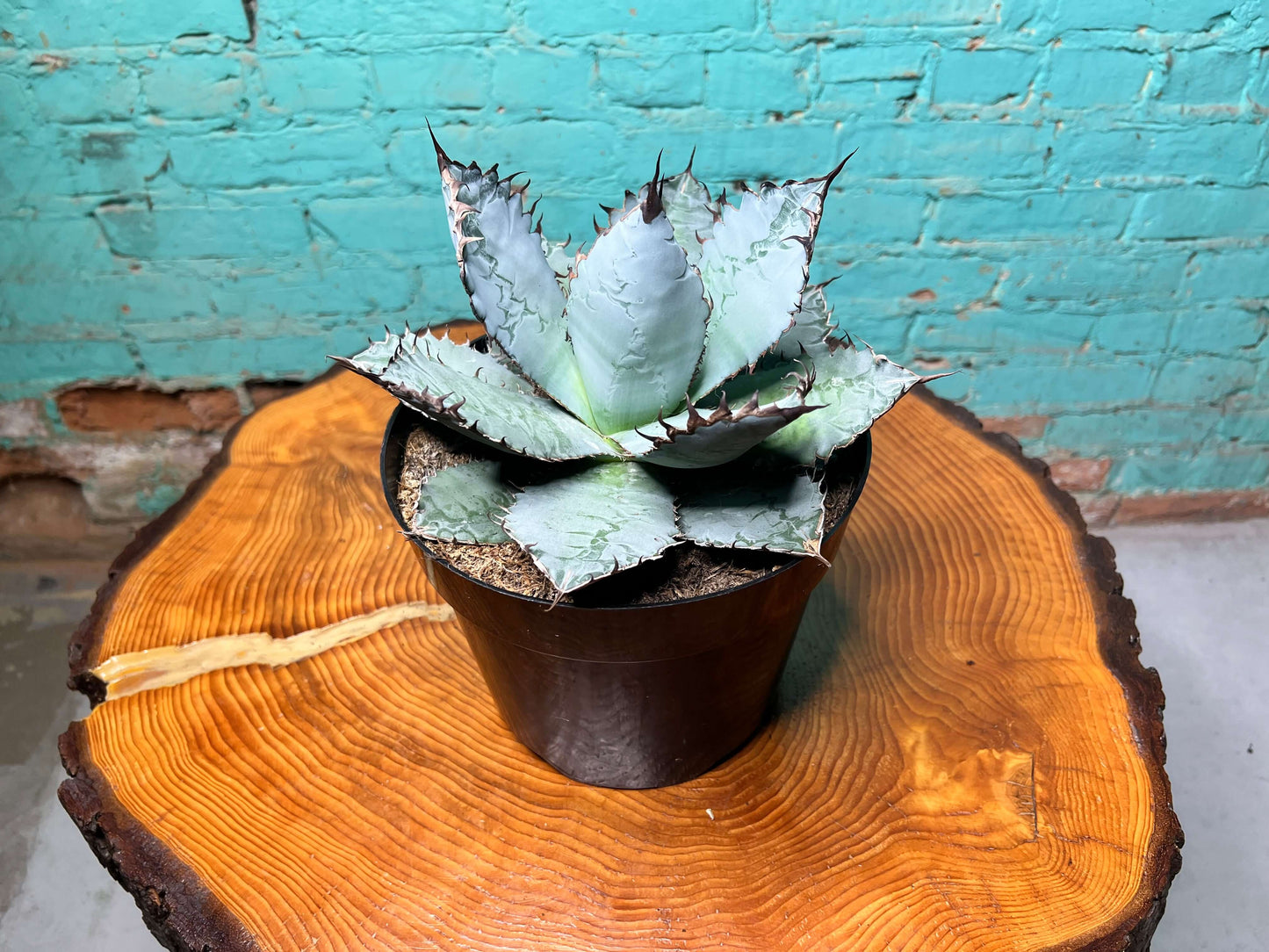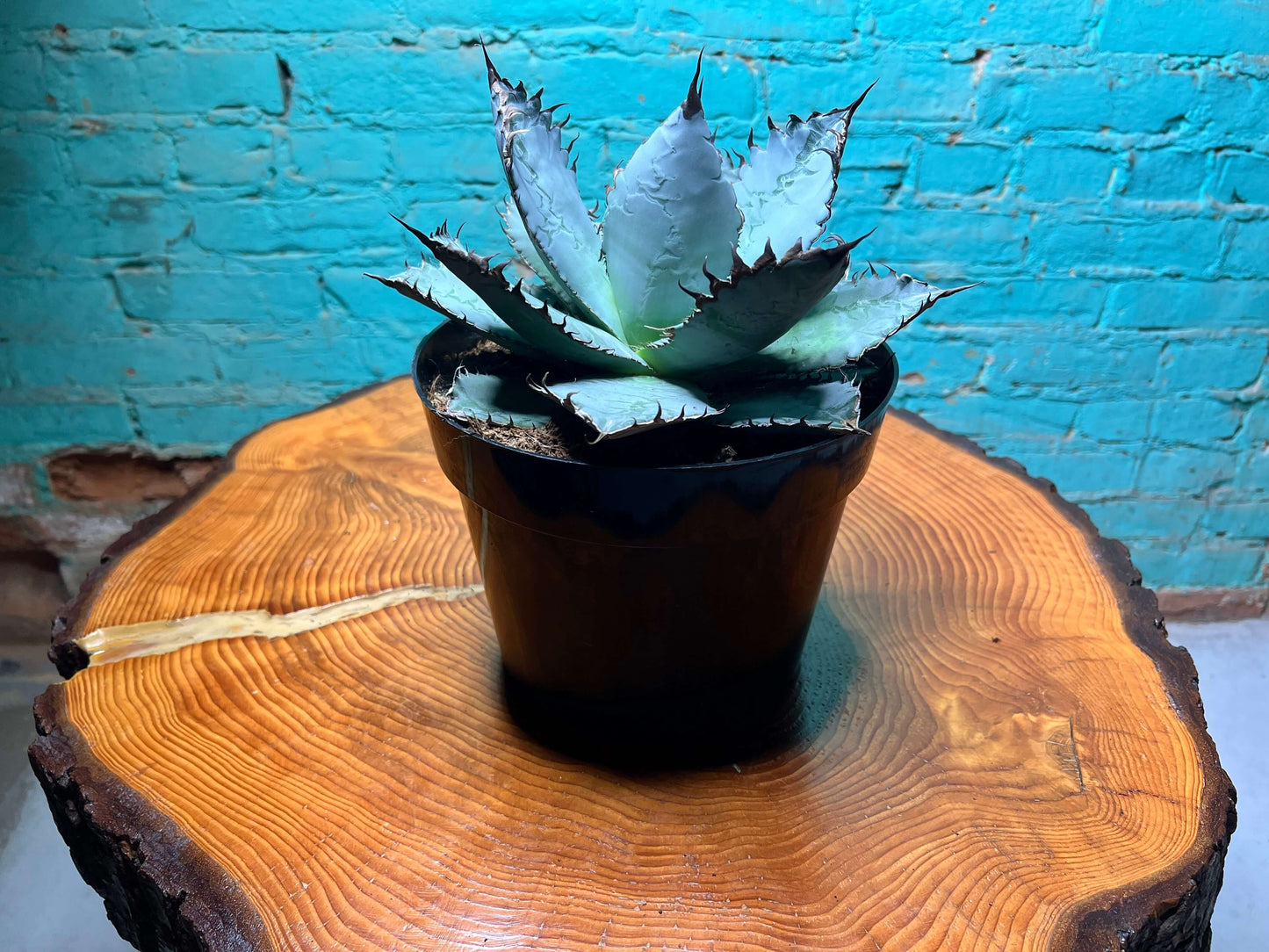The Rooted Plant Shop
Agave Lion’s Mane 8”
Agave Lion’s Mane 8”
Couldn't load pickup availability
Agave is a striking succulent native to the arid regions of the Americas, most commonly found in Mexico and the southwestern United States. Known for its dramatic rosettes of thick, fleshy leaves, agave has evolved to thrive in hot, dry climates where water is scarce. The leaves are often tipped with sharp spines and have fibrous interiors, an adaptation that helps the plant conserve water and deter grazing animals. Many species are monocarpic, meaning they flower once—producing a tall, spectacular stalk of blooms—before the plant dies, leaving behind offsets or "pups" to continue its cycle.
Beyond its ornamental value, agave has been an important resource for centuries. Indigenous peoples used its fibrous leaves for rope, textiles, and brushes, while the sap and heart provided food and drink. Today, agave is most famously associated with the production of tequila and mezcal, traditional spirits made from the heart (piña) of certain agave species, primarily Agave tequilana. Its sap, sometimes called aguamiel, can also be fermented into pulque, an ancient Mexican beverage. Agave nectar, a sweetener derived from the plant, has also grown popular as a sugar substitute.
In cultivation, agave is prized as a hardy, low-maintenance landscape plant, especially in xeriscaping where water conservation is key. These plants prefer full sun, well-draining soil, and minimal watering once established. Their architectural forms make them standout focal points in gardens and containers. While they are drought-tolerant, they are sensitive to overwatering, which can lead to root rot. Depending on the species, agave can range from small, container-friendly plants to massive specimens with leaves spanning several feet. With their resilience, versatility, and cultural significance, agaves continue to hold an important place in both traditional and modern uses.
Share



Let customers speak for us
from 424 reviewsThe packaging was great. Everything safe and secure. Beautiful fully intact plant with a cozy heat pack.

This is my 2nd time purchasing an Alocasia Polly 4 1st time in the winter 😍 40 hour heat pack was surprisingly hot on arrival Superbly Packaged! Super healthy and pretty I’m so happy thank you

Loving it so far! It’s beautiful!

Do not hesitate! Add to cart and checkout, you won’t be disappointed. Mel is incredibly knowledgeable and has taught me so much, she doesn’t just sell plants she teaches and shows you how to keep them alive and thriving! I always receive my plants quickly, and most important - safely. Mel packages them with so much care, and ensures they will make the voyage okay! We are in the thick of winter in Wisconsin, and both times our heat pack was still warm and plants were good. And I haven’t even mentioned the quality, huge selection and amazing prices! One other thing worth noting is none of her plants will come with problematic pests like many bug box, ope I mean big box stores! Here are a few photos, I wish I could share more than 5.
This plant arrived healthy and beautiful in spite of below freezing tempertures outside. 😁

All of my plants arrived perfect and are so beautiful! Will be coming back.

Packaging was great!!! Plants arrived is great condition and heat pack was still a little warm.

She was delivered looking like perfection! She was packed beautifully. Mel is my new go-to for all my plants!

Plant arrived quickly and heathy Inspite of cold temps. Plant was wrapped and shipped with the utmost protection and care!!! The firefly is doing well in her new home!!!! Will purchase again from The Rooted Plant shop without hesitation!!









